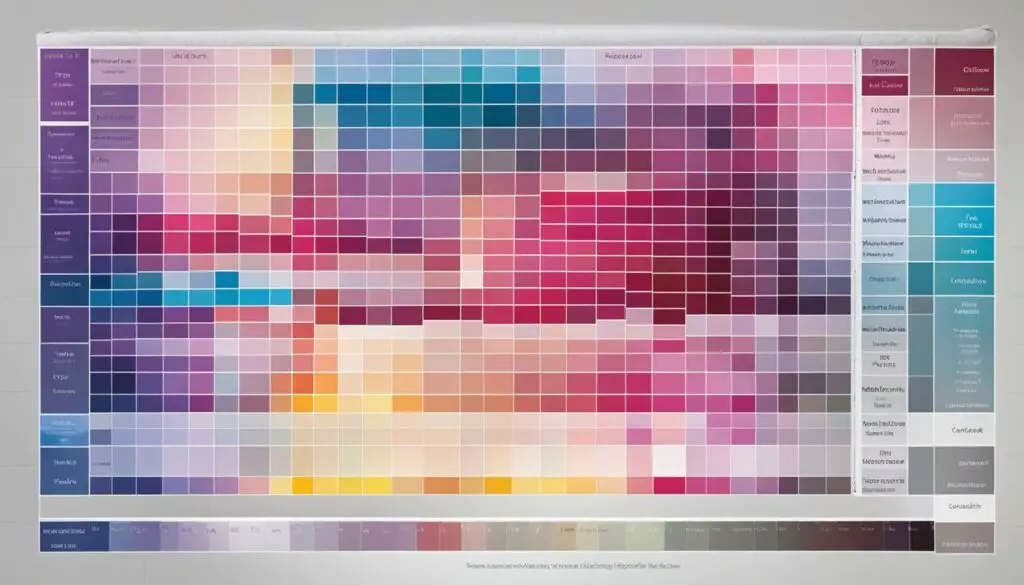Monitoring your cat’s gum color is an important part of assessing their overall health. By observing changes in gum color, you can potentially detect early signs of illness or underlying health issues. The color of your cat’s gums can provide valuable insights and help guide you in seeking appropriate veterinary care.
Key Takeaways:
- Regularly check your cat’s gum color to monitor their health.
- Gum color can indicate potential health issues in cats.
- Normal gum color is typically pink.
- Changes in gum color should be considered alongside other symptoms and behaviors.
- Consult with your veterinarian if you notice any abnormalities in gum color.
Why Gum Color Matters in Cat Health
When it comes to monitoring your cat’s health, paying attention to their gum color is crucial. Cats are masters at hiding signs of illness, making it essential for us as pet owners to be vigilant and observant. While gum color alone is not a diagnostic tool, it can provide valuable insights into your cat’s overall well-being and oral health. By regularly checking your cat’s gum color, you can potentially detect early signs of illness or underlying health issues, allowing you to seek appropriate veterinary care.
Changes in gum color may indicate various health issues such as gum disease, anemia, or infection. Pale or white gums may suggest anemia, whereas bright red gums could be a sign of gingivitis or gum inflammation. Yellow or gray gums may indicate liver or kidney problems, and blue or purple gums can be a sign of respiratory or cardiovascular issues. Monitoring your cat’s gum color can help you catch these abnormalities early and take necessary action to maintain their health.
Regularly checking your cat’s gum color is like a window into their overall health. By paying attention to this small detail, we can stay proactive in ensuring our feline companions lead long and healthy lives.
It’s important to note that gum color can vary between individual cats. While pink is considered the normal gum color, some cats may have black spots or freckles on their gums, which is usually harmless. Establishing what’s normal for your cat’s gum color is essential to notice any changes or abnormalities. Additionally, healthy gums should feel smooth and moist when touched, indicating proper hydration.
Stay tuned for the comprehensive cat gum color chart in the next section, where we’ll dive deeper into the different gum colors and their potential meanings. Remember, your cat’s oral health is an integral part of their overall well-being, so regular dental care and monitoring their gum color are key to keeping them happy and healthy.
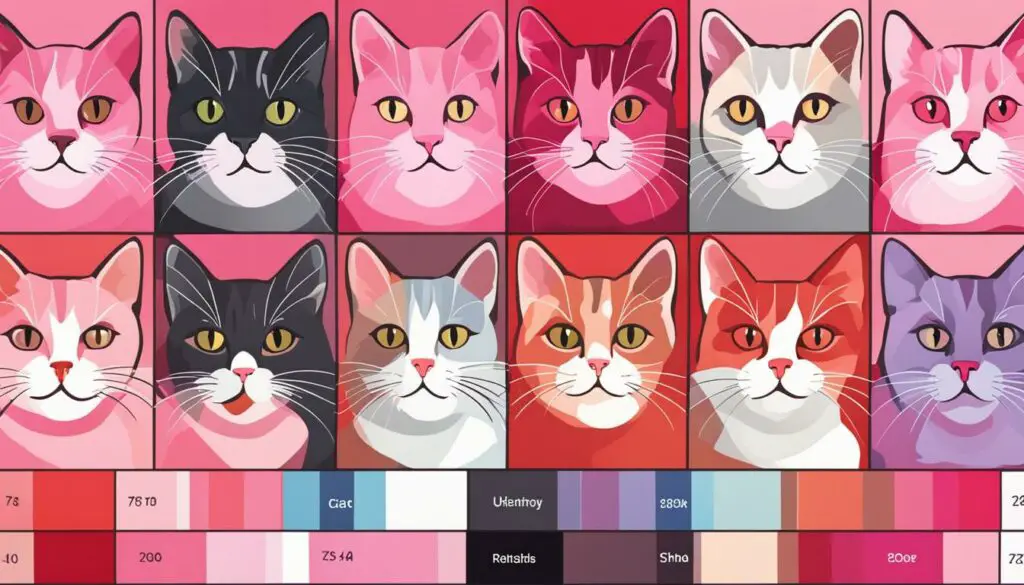
Understanding Normal Gum Color in Cats
When it comes to assessing your cat’s overall health, understanding normal gum color is crucial. Typically, a healthy cat’s gums should be a shade of pink. However, it’s important to note that individual cats may have variations in gum color, such as black spots or freckles on their gums. To determine what is normal for your cat, it’s essential to observe their gum color regularly.
In addition to color, the texture of your cat’s gums can also provide important information about their gum health. Healthy gums should feel smooth and moist to the touch, indicating proper hydration. If you notice any abnormalities in gum color or texture, it is recommended to consult with your veterinarian for a thorough evaluation.
Importance of Dental Care for Maintaining Gum Health
Dental care plays a critical role in maintaining healthy gums for your feline friend. Regular dental care activities, such as brushing your cat’s teeth and providing dental treats or chews, can help prevent gum disease, tooth decay, and other oral health problems. It is essential to incorporate these practices into your cat’s routine to ensure their gum health.
| Gum Color | Potential Meanings |
|---|---|
| Pale or White Gums | Signs of anemia, shock, or poor circulation |
| Red or Inflamed Gums | Indications of gum disease or infection |
| Yellow Gums | Possible liver or gallbladder issues |
| Blue or Purple Gums | Signs of oxygen deprivation or respiratory distress |
| Bright Red Gums | Potential heat stroke or high fever |
Regular dental care, including professional cleanings by a veterinarian, can also help maintain your cat’s gum health. They can remove tartar buildup and identify any potential dental issues early on. Remember, prevention is key when it comes to your cat’s oral health.
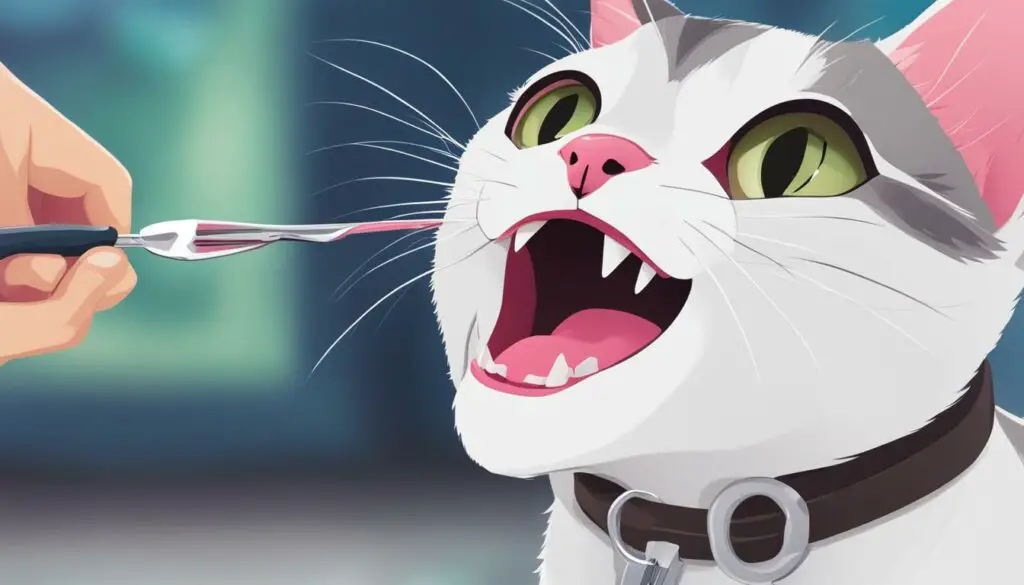
Conclusion
Gum color can be a telling sign of your cat’s overall health. Understanding what is normal for your cat’s gum color is essential in detecting any changes or abnormalities. By providing regular dental care and monitoring their gum health, you can help ensure your cat’s well-being and longevity. Remember to consult with your veterinarian for personalized advice and guidance on your cat’s dental care routine.
Signs of Unhealthy Gum Color in Cats
Monitoring your cat’s gum color is an important part of maintaining their overall oral health. Changes in gum color can be an indication of potential health issues or gum disease in cats. Here are some signs to watch out for:
- Bright red gums: If your cat’s gums appear bright red instead of the normal pink color, it may indicate inflammation or infection. This can be a sign of gingivitis or periodontal disease, both of which require veterinary attention.
- Paleness or bluish tint: Pale or bluish gums can suggest a lack of oxygenation or poor blood circulation. It may be a symptom of anemia, heart disease, or respiratory issues. Prompt veterinary evaluation is recommended.
- Yellow or jaundiced color: Yellow gums may indicate liver problems or bile duct obstruction. If your cat’s gums appear yellow, it’s essential to consult with a veterinarian to determine the underlying cause.
- Dark red or purple gums: Dark red or purple gums can be a sign of decreased blood flow or poor circulation. This may occur in conditions such as shock or hypothermia. Immediate veterinary attention is necessary.
- White or grayish gums: White or grayish gums can indicate anemia, shock, or a decrease in blood flow. Time is of the essence in these situations, and immediate veterinary intervention is crucial.
It’s important to note that these are just a few examples of abnormal gum color in cats. Any noticeable change in your cat’s gum color should be taken seriously and evaluated by a veterinarian. Regular dental hygiene practices and routine veterinary check-ups can help prevent gum disease and maintain your cat’s oral health.
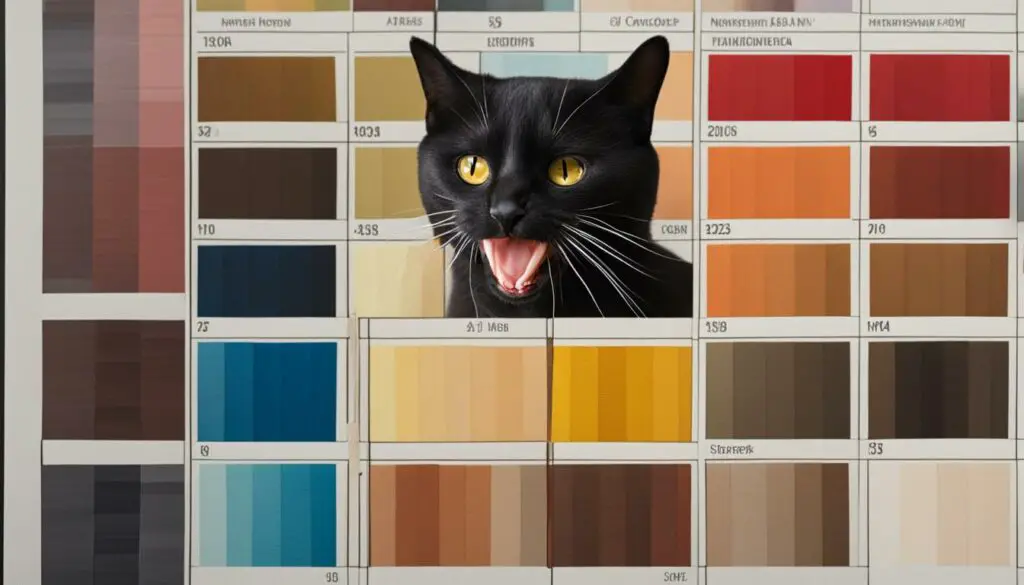
How to Check Your Cat’s Gum Color
Regularly checking your cat’s gum color is an important part of monitoring their overall health and wellness. By observing changes in gum color, you can potentially detect early signs of illness or underlying health issues. Follow these steps to check your cat’s gum color:
- Gently lift your cat’s upper lip to expose their gums.
- Observe the color of their gums. Normal gum color in cats is typically pink, but individual cats may have variations such as black spots or freckles.
- Healthy gums should feel smooth and moist to the touch, indicating proper hydration.
- Check for any changes in gum color, such as pale or white gums, red or inflamed gums, or blue or purple gums. These can be signs of potential health issues.
- If you notice any abnormalities or changes in gum color, consult with your veterinarian for further evaluation and guidance.
“Regularly checking your cat’s gum color is an essential part of being a responsible pet owner. By familiarizing yourself with the cat gum color chart and regularly checking your cat’s gums, you can potentially detect early signs of illness or underlying health issues.”
Remember, gum color is just one indicator of a cat’s overall health. Changes in gum color should be considered in conjunction with other symptoms and behaviors. Regular veterinary check-ups and open communication with your veterinarian are crucial in maintaining your cat’s overall health and well-being.
| Gum Color | Potential Meaning |
|---|---|
| Pink | Healthy |
| Pale or White | Possible anemia or circulation issues |
| Red or Inflamed | Potential gum disease or infection |
| Blue or Purple | Indication of poor oxygenation or circulation issues |
Checking your cat’s gum color regularly and seeking veterinary care if you notice any abnormalities can help ensure their oral health and overall well-being. Remember to provide regular dental care, including brushing your cat’s teeth, to maintain healthy gums and prevent oral health issues.

Interpreting Cat Gum Colors – A Handy Chart
Understanding the meaning behind your cat’s gum color can provide valuable insights into their overall health. By regularly checking your cat’s gums and comparing their color to the following chart, you can monitor any changes and seek appropriate veterinary care if necessary.
| Gum Color | Potential Meaning |
|---|---|
| Pink | This is the normal gum color for most cats. It indicates good oral health and proper blood circulation. |
| Pale Pink or White | Anemia or poor blood circulation could be the cause of pale or white gums. Consult your veterinarian for a proper diagnosis. |
| Red | Red gums can be a sign of inflammation or gum disease. It’s crucial to address this issue promptly to prevent further complications. |
| Bright Red | Bright red gums may indicate an infection or injury. Contact your veterinarian for guidance on the appropriate course of action. |
| Blue or Purple | Blue or purple gums can be a sign of inadequate oxygen supply. This requires immediate veterinary attention. |
Keep in mind that gum color should be considered alongside other symptoms and behaviors. If you notice any abnormalities, consult with your veterinarian for a proper diagnosis and treatment plan. Checking your cat’s gum color regularly is an important part of being a responsible pet owner and protecting their overall well-being.
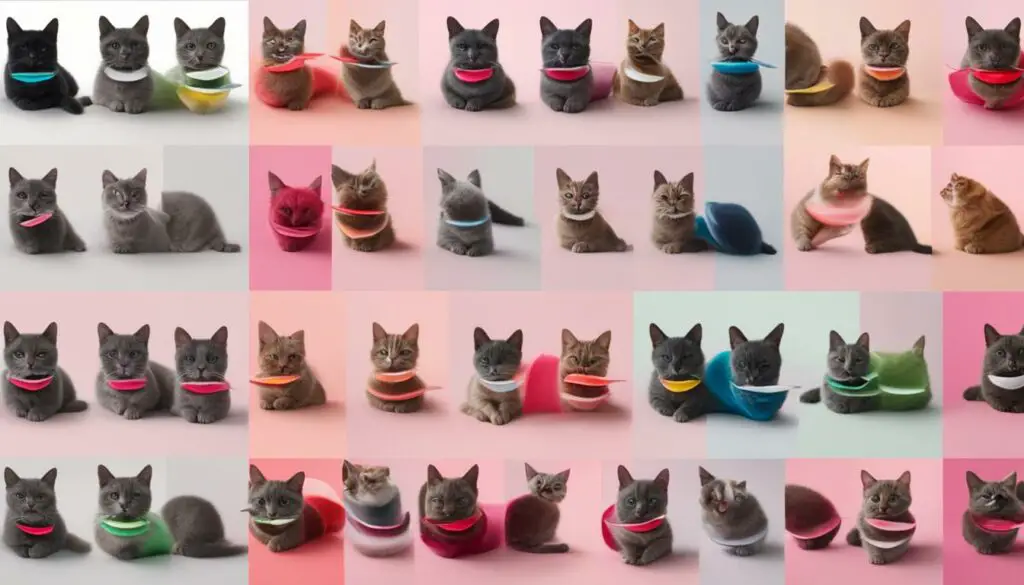
Remember:
While the chart serves as a helpful guide, it’s important to remember that individual cats may have variations in gum color. Additionally, gum color alone is not a definitive diagnostic tool. If you have any concerns about your cat’s gum health or overall well-being, always consult with your veterinarian. They can provide personalized advice and recommendations to ensure your cat remains healthy and happy.
Common Gum Color Abnormalities and Their Causes
When it comes to monitoring your cat’s gum color, it’s important to be aware of common abnormalities that may indicate underlying health issues. Here are some of the most frequently observed gum color abnormalities in cats and their potential causes:
1. Pale or White Gums
If you notice that your cat’s gums appear pale or white, it could be a sign of anemia or poor circulation. Anemia can be caused by underlying conditions such as internal bleeding, kidney disease, or nutritional deficiencies. It’s essential to consult with your veterinarian to determine the underlying cause and appropriate treatment.
2. Blue or Purple Gums
Blue or purple gums, also known as cyanosis, can indicate a lack of oxygen in the blood. This can be a result of respiratory distress, heart disease, or other circulatory issues. It’s crucial to seek immediate veterinary attention if your cat’s gums appear blue or purple, as it may be a sign of a serious medical condition.
3. Bright Red Gums
Bright red gums may suggest inflammation or infection in the oral cavity. This can be caused by periodontal disease, gingivitis, or oral injuries. Regular dental care, including regular brushing and professional cleanings, can help prevent and manage these conditions. If your cat’s gums are consistently bright red, it’s important to consult with your veterinarian for a thorough examination.
4. Yellow or Jaundiced Gums
Yellow or jaundiced gums may indicate liver disease or dysfunction. When the liver is unable to properly process bilirubin, a yellow pigment, it can accumulate in the blood and lead to jaundice. Other accompanying symptoms may include lethargy, loss of appetite, and weight loss. Timely veterinary intervention is crucial in diagnosing and managing liver-related conditions.
5. Spotted or Discolored Gums
Spotted or discolored gums, such as black spots or patches, may be a result of pigmentation variations and are generally not a cause for concern. However, if you notice any sudden changes or if the spots become raised or ulcerated, it’s wise to consult with your veterinarian for further evaluation.
Remember, any significant changes in your cat’s gum color should be discussed with a veterinarian. They will be able to provide a comprehensive evaluation and recommend appropriate treatment if necessary. Regular dental care, including dental examinations and cleanings, can help maintain healthy gums and overall feline oral health.
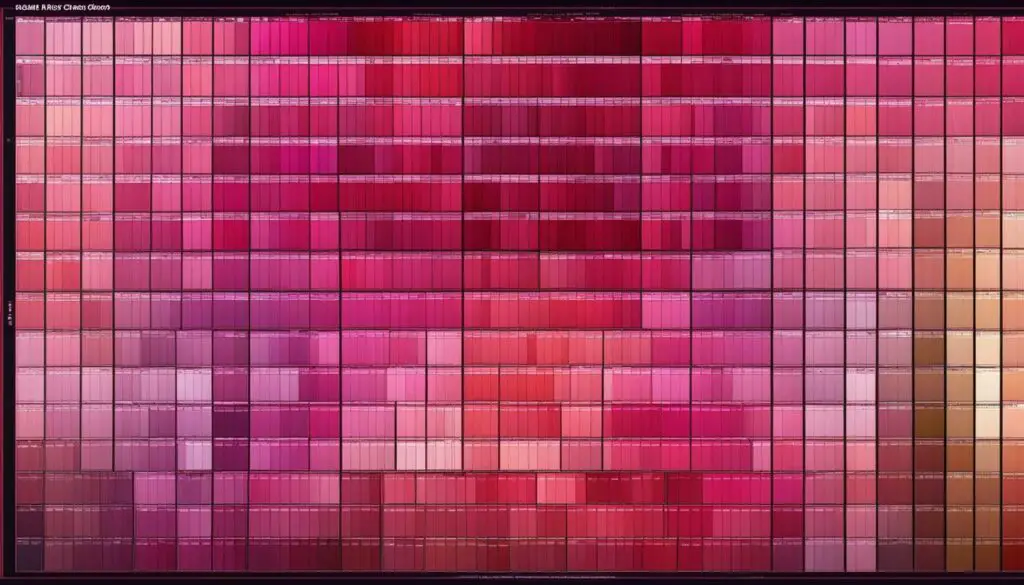
Table: Common Gum Color Abnormalities and Their Causes
| Abnormal Gum Color | Potential Causes |
|---|---|
| Pale or White | Anemia, poor circulation |
| Blue or Purple | Lack of oxygen in the blood, respiratory distress, heart disease |
| Bright Red | Inflammation, infection, periodontal disease, gingivitis |
| Yellow or Jaundiced | Liver disease, dysfunction |
| Spotted or Discolored | Pigmentation variations, potential underlying conditions if changes occur |
Importance of Dental Care for Healthy Gums
Maintaining good dental hygiene is essential for promoting healthy gums in cats. Just like humans, cats can develop dental issues such as gum disease and tooth decay if their oral health is neglected. Regular dental care can help prevent these problems and ensure your cat’s overall well-being.
One of the most important aspects of cat dental care is brushing your cat’s teeth. Although it may take some time for your cat to get used to it, regular teeth brushing can remove plaque and prevent tartar buildup, which can contribute to gum disease. Use a cat-friendly toothbrush and toothpaste, as human toothpaste can be toxic to cats. Start by gently introducing your cat to the process and gradually increase the duration of each brushing session.
In addition to brushing, providing dental treats and chews can help keep your cat’s teeth clean and gums healthy. These treats are designed to promote chewing, which can help remove plaque from the teeth. Look for treats that have a proven track record of promoting dental health in cats. Dental additives that can be added to your cat’s water can also help in preventing dental issues. These additives can help fight bacteria and freshen your cat’s breath.
Importance of Regular Veterinary Check-ups
While proactive dental care at home is crucial, regular veterinary check-ups play a significant role in maintaining your cat’s oral health. During these visits, your veterinarian will examine your cat’s gums and teeth, looking for any signs of disease or abnormalities. They may perform a thorough dental cleaning if necessary, which involves removing tartar and plaque buildup.
Your veterinarian may also recommend dental X-rays to evaluate your cat’s oral health more comprehensively. X-rays can reveal hidden dental problems such as tooth root abscesses or fractures that are not visible during a regular examination. By addressing these issues early, you can prevent further complications and ensure that your cat’s gums remain healthy.
In conclusion, prioritizing dental care for your cat is crucial for maintaining healthy gums and overall oral health. Through regular teeth brushing, providing dental treats and additives, and regular veterinary check-ups, you can help prevent gum disease, tooth decay, and other dental problems. By taking proactive steps to care for your cat’s oral health, you can ensure that they live a happy and healthy life.
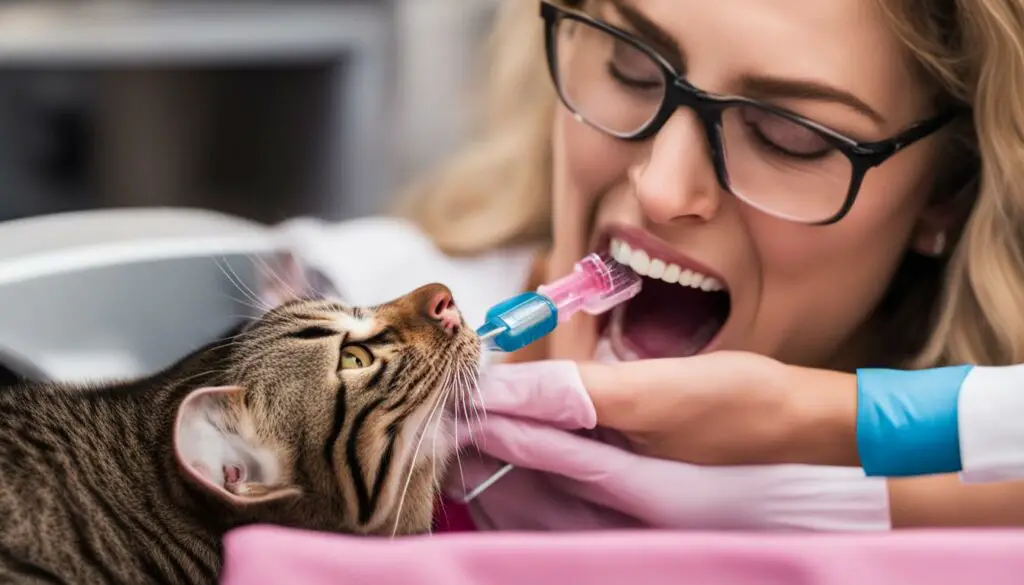
Taking Care of Your Cat’s Oral Health
When it comes to ensuring the overall well-being of your feline friend, maintaining good dental and oral hygiene is essential. Just like humans, cats can suffer from gum disease, tooth decay, and other dental issues that can impact their overall health. By implementing a regular oral care routine, you can help prevent these problems and keep your cat’s gums healthy and strong.
One of the key aspects of cat dental hygiene is regular brushing. While it may take some time for your cat to get used to this activity, it is worth the effort. Start by using a soft toothbrush or a finger brush and a toothpaste specially formulated for cats. Gently brush your cat’s teeth and gums in a slow, circular motion. Aim to brush their teeth at least two to three times a week to remove plaque, tartar, and food debris that can lead to gum disease.
In addition to brushing, there are other ways to promote good oral hygiene in your cat. Providing dental treats and chews can help remove plaque and tartar buildup. Look for products that are specifically designed for cats and approved by veterinarians. You can also incorporate dental additives into your cat’s drinking water, which can help reduce bacteria in their mouth. Consult with your veterinarian for recommendations on the best dental care products for your cat.
Maintaining your cat’s oral health can help prevent gum disease and other dental problems that can impact their overall well-being.
Regular veterinary check-ups are also crucial for monitoring your cat’s oral health. Your veterinarian can perform a thorough examination of your cat’s teeth and gums, identify any dental issues, and provide appropriate treatment. They may also recommend professional dental cleanings under anesthesia to remove stubborn plaque and tartar buildup.
In addition to home care and veterinary check-ups, being vigilant about your cat’s oral health includes monitoring for signs of gum disease. These signs may include bad breath, swollen or bleeding gums, difficulty eating or chewing, and excessive drooling. If you notice any of these symptoms, it’s important to seek veterinary attention promptly to prevent further complications.
By prioritizing your cat’s dental and oral health, you can ensure that they enjoy a happy and healthy life. From regular brushing to providing dental treats and chews, there are many ways to take care of your cat’s oral hygiene. Remember to consult with your veterinarian for personalized recommendations and guidance to meet your cat’s specific needs.
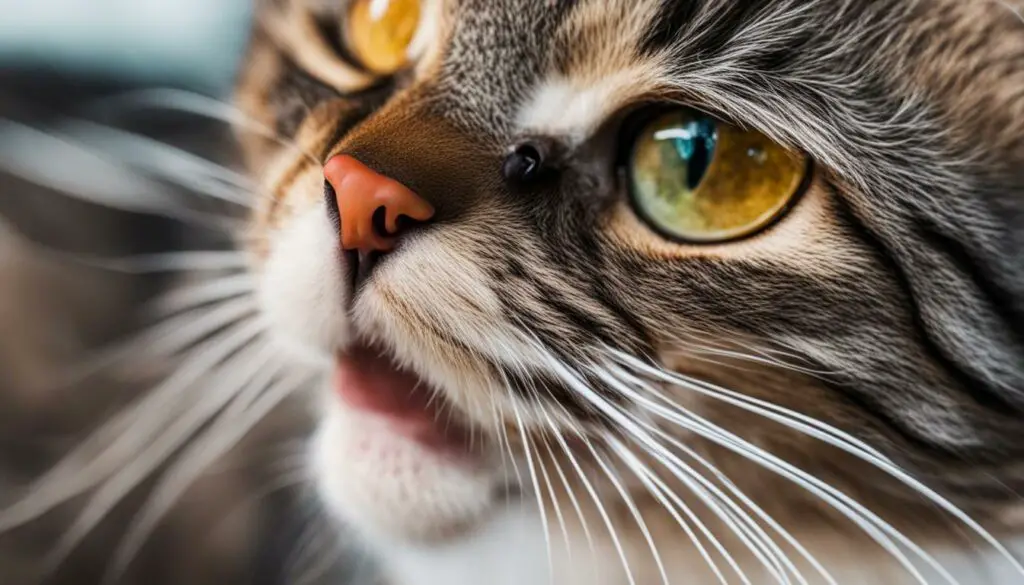
The Relationship Between Gum Color and Overall Cat Health
When it comes to assessing your cat’s overall health, monitoring their gum color plays an important role. Changes in gum color can provide valuable insights into potential health issues and prompt further investigation. While it’s important to note that gum color alone is not a definitive diagnostic tool, it can serve as an indicator of underlying health problems.
By regularly checking your cat’s gum color, you can potentially detect early signs of illness or abnormalities. However, it’s essential to consider gum color changes in conjunction with other symptoms and behaviors. This holistic approach, combined with regular veterinary check-ups, allows for a comprehensive evaluation of your cat’s well-being.
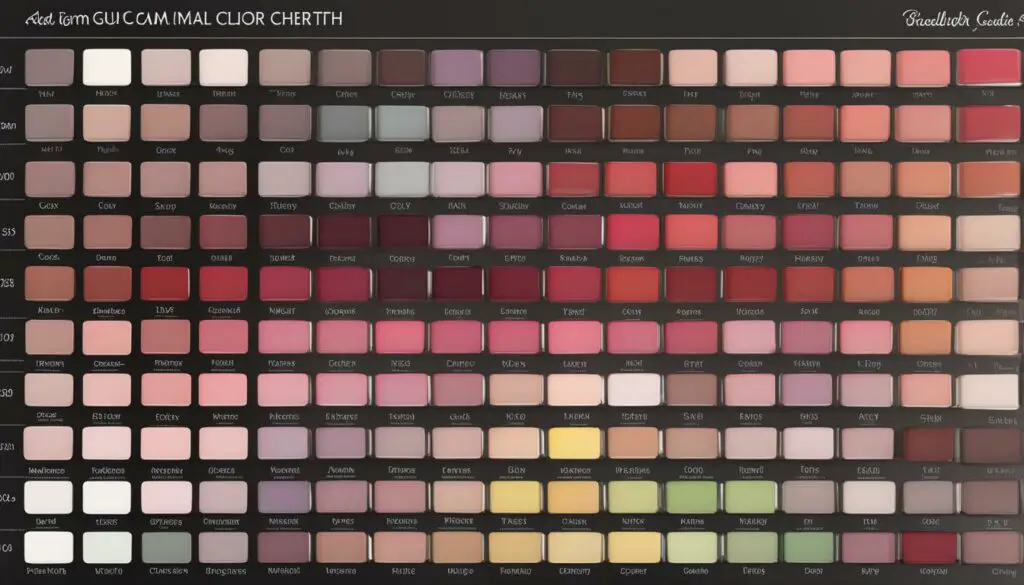
Understanding the cat gum color chart can help you interpret the potential meanings behind different gum colors. However, it’s important to remember that individual cats may have variations in gum color, such as black spots or freckles. This is why establishing what is normal for your cat’s gum color is crucial.
In addition to monitoring gum color, maintaining good dental hygiene is essential for promoting healthy gums in cats. Regular dental care activities, including brushing your cat’s teeth, providing dental treats and chews, and incorporating dental additives into their water, can help prevent gum disease and other oral health problems.
Summarized Points:
- Monitoring your cat’s gum color is crucial for assessing their overall health.
- Gum color changes should be considered in conjunction with other symptoms and behaviors.
- Regular veterinary check-ups are necessary for a comprehensive evaluation of your cat’s well-being.
- Understanding the cat gum color chart can help interpret potential meanings behind different gum colors.
- Individual cats may have variations in gum color, so establishing what is normal for your cat is important.
- Maintaining good dental hygiene is essential for promoting healthy gums.
- Regular dental care activities can help prevent gum disease and other oral health problems.
By prioritizing your cat’s gum health and overall oral care, you can ensure they enjoy a long and happy life. Remember to consult with your veterinarian if you notice any significant changes in your cat’s gum color or have concerns regarding their oral health.
Conclusion
In conclusion, monitoring your cat’s gum color is an essential part of being a responsible pet owner. By familiarizing yourself with the cat gum color chart and regularly checking your cat’s gums, you can potentially detect early signs of illness or underlying health issues. It’s important to remember that gum color is just one indicator of a cat’s overall health, so changes should be considered in conjunction with other symptoms and behaviors.
Regular veterinary check-ups and open communication with your veterinarian play a crucial role in maintaining your cat’s overall health and well-being. Consulting with your veterinarian if you notice any abnormalities or have concerns about your cat’s gum health is highly recommended. With proper dental care and attention to gum color, you can help ensure your cat’s oral health and longevity.
Remember, a healthy cat means a happy cat, so make sure to prioritize your furry friend’s dental care and regularly check their gum color for any potential issues. By taking proactive steps and staying vigilant, you can contribute to your cat’s overall well-being and provide them with a long and healthy life.
FAQ
Why is monitoring my cat’s gum color important?
Monitoring your cat’s gum color is important because it can provide valuable insights into their overall health and help detect early signs of illness or underlying health issues.
What is the normal gum color for cats?
The normal gum color for cats is typically pink, although individual cats may have variations such as black spots or freckles on their gums.
What are signs of unhealthy gum color in cats?
Signs of unhealthy gum color in cats include pale gums, red or inflamed gums, blue or purple gums, or yellow or jaundiced gums.
How do I check my cat’s gum color?
To check your cat’s gum color, gently lift their lip to expose the gums and observe the color. Healthy gums should be pink, while any abnormal color changes should be noted.
What do different gum colors in cats indicate?
Different gum colors in cats can indicate various health conditions. For example, pale gums may suggest anemia, while red or inflamed gums may indicate gum disease. It’s important to consult with a veterinarian for a proper diagnosis.
How can I maintain my cat’s gum health?
Maintaining good dental hygiene is crucial for promoting healthy gums in cats. This includes regular dental care activities such as brushing their teeth, providing dental treats and chews, and incorporating dental additives into their water.
Is gum color the only indicator of my cat’s overall health?
No, gum color is just one indicator of a cat’s overall health. Changes in gum color should be considered alongside other symptoms and behaviors. Regular veterinary check-ups and open communication with a veterinarian are important for maintaining your cat’s overall health and well-being.

